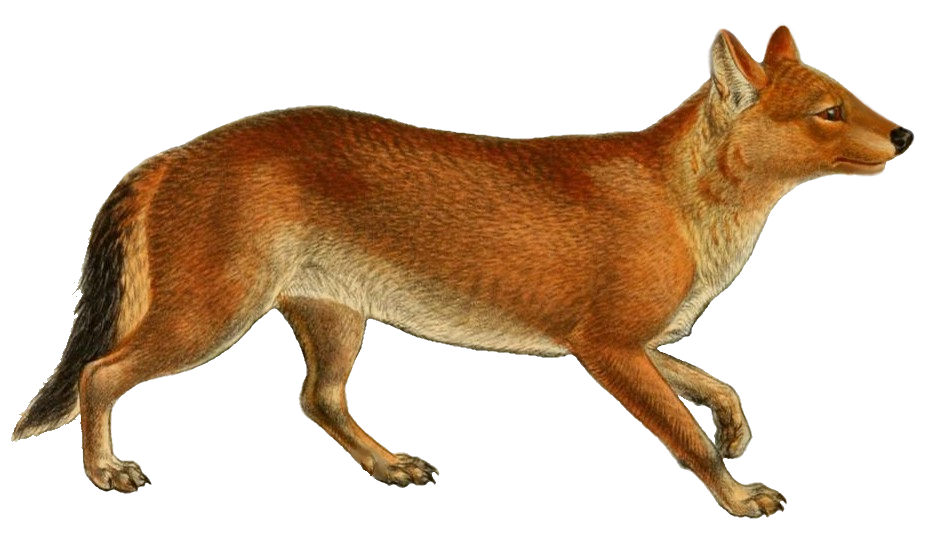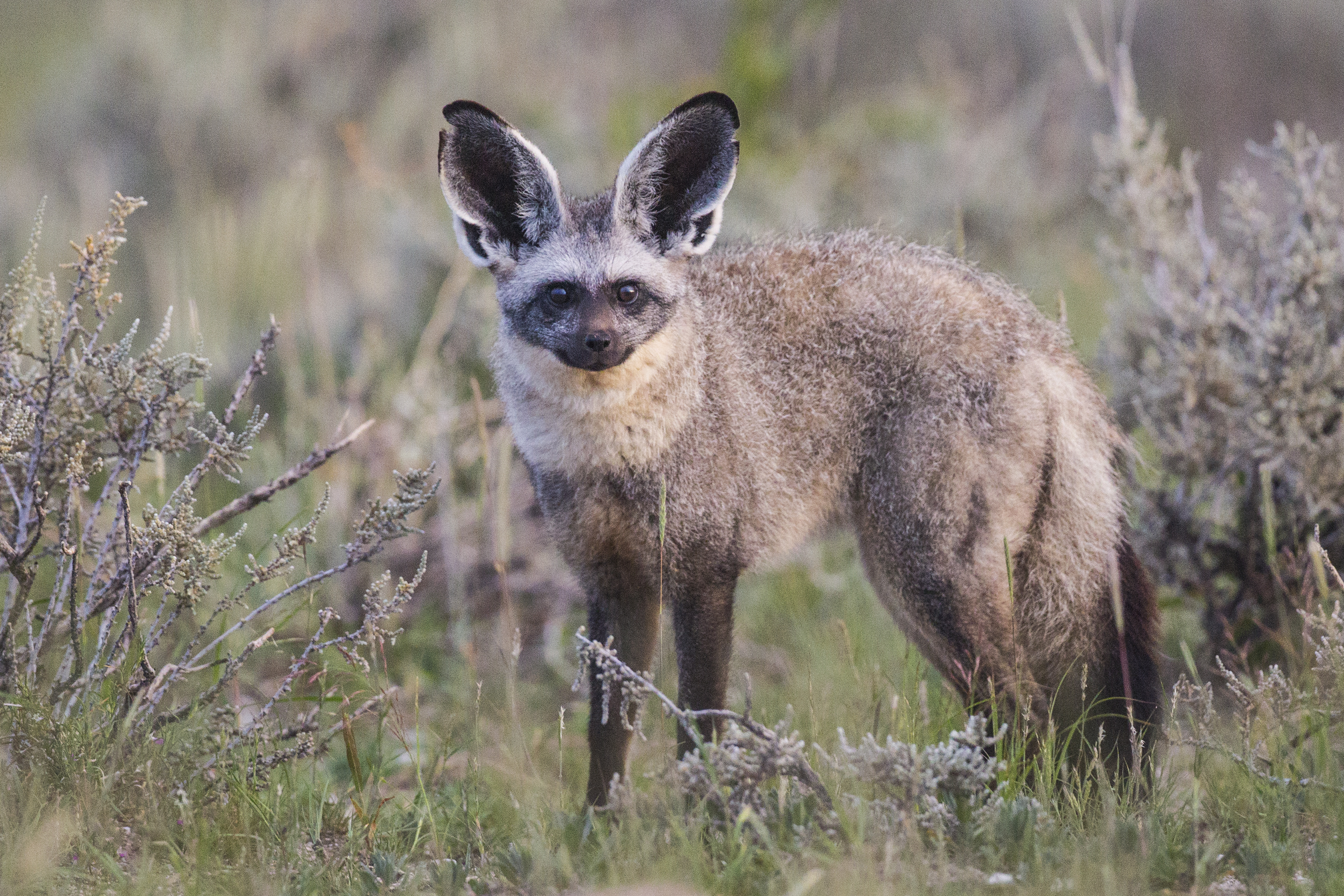|
Vulpini
Vulpini is a Tribe (biology), tribe which represents the fox-like taxon of the subfamily Caninae (the canines), and is sister to the dog-like tribe Canini (tribe), Canini. It comprises the 15 extant and 21 Extinction, extinct species found on all continents. Genera Taxonomy The taxonomy of Carnivora in general and Canidae in particular correlates with various diagnostic features of the dentition and basicranium. Regarding Vulpini, Tedford has remarked: The cladogram below is based on the phylogeny of Lindblad-Toh (2005) modified to incorporate recent findings on ''Vulpes''. References Vulpini, Mammal tribes Canines Taxa named by Christian Gottfried Ehrenberg Taxa named by Wilhelm Hemprich {{Canid-stub ... [...More Info...] [...Related Items...] OR: [Wikipedia] [Google] [Baidu] |
Caninae
Caninae (whose members are known as canines () is the only living subfamily within Canidae, alongside the extinct Borophaginae and Hesperocyoninae. They first appeared in North America, during the Oligocene around 35 million years ago, subsequently spreading to Asia and elsewhere in the Old World at the end of the Miocene, some 7 million to 8 million years ago. Taxonomy and lineage The genus ''Leptocyon'' (Greek: ''leptos'' slender + ''cyon'' dog) includes 11 species and was the first primitive canine. They were small and weighed around 2 kg. They first appeared in Sioux County, Nebraska in the Orellan era 34-32 million years ago, which was the beginning of the Oligocene. This was the same time as the appearance of the Borophaginae with whom they share features, indicating that these were two sister groups. Borophaginae skull and dentition were designed for a powerful killing bite compared with the ''Leptocyon'' which were designed for snatching small, f ... [...More Info...] [...Related Items...] OR: [Wikipedia] [Google] [Baidu] |
Ferrucyon
''Ferrucyon'' is an extinct genus of omnivorous mammal of the family Canidae, which inhabited North America during the Pliocene, Blancan in the NALMA classification, from about 4.9 to approximately 2.6 Ma. The type species, ''F. avius'', was originally interpreted as a relative of the modern crab-eating fox, and described as a species belonging to the genus ''Cerdocyon''. Ruiz-Ramoni ''et al.'' (2020) reinterpreted it as a vulpine canid related to North American species '' Metalopex macconnelli'', and to the Eurasian genus ''Nyctereutes''. This reinterpretation necessitated removal of ''"Cerdocyon" avius'' from the genus ''Cerdocyon'', and Ruiz-Ramoni ''et al.'' (2020) transferred it to the separate genus ''Ferrucyon''. Taxonomy ''Cerdocyon'' was named by Hamilton-Smith (1839). It was assigned to Canidae by Hamilton-Smith (1839) and Carroll (1988).R. L. Carroll. 1988. Vertebrate Paleontology and Evolution. W.H. Freeman and Company ''F. avius'' was about long. Fossils of th ... [...More Info...] [...Related Items...] OR: [Wikipedia] [Google] [Baidu] |
Canini (tribe)
Canini is a taxon which represents the dog-like Tribe (biology), tribe of the subfamily Caninae (the canines), and is sister to the fox-like tribe Vulpini. The Canini came into existence 9 million years ago. This group was first represented by ''Eucyon'', mostly by ''Eucyon davisi'' that was spread widely across North America and is Basal (phylogenetics), basal to the other members of the tribe. Its members are informally known as true dogs. Taxonomy Members of this tribe include: : Common names of most of the South American canines include "fox", based on resemblance, but they are more closely related to wolves than to ''vulpini'', the Eurasian and North American foxes. The cladogram below is based on the phylogeny of Lindblad-Toh ''et al''. (2005), modified to incorporate recent findings on ''Canis'' species, ''Lycalopex'' species, and ''Dusicyon''. References External links {{Taxonbar, from=Q28266 Canini (tribe), Mammal tribes Canines ... [...More Info...] [...Related Items...] OR: [Wikipedia] [Google] [Baidu] |
Prototocyon
''Prototocyon'' is an extinct genus of small omnivorous canid that lived during the Late Pliocene and Early Pleistocene. It is closely related to the living bat-eared fox (''Otocyon''). Taxonomy ''Prototocyon'' was named by Pohle (1928) and was assigned to Canidae by Carroll (1988). Old literature relates it to ''Vulpes bengalensis'', but not more modern literature (e.g. McKenna and Bell. A 2013 study stated that the genus "is only doubtfully distinct from ''Otocyon"'' the genus of the living bat-eared fox. Description ''Prototocyon'' was a small canine similar to the bat-eared fox in overall morphology and likely in habits as well. It differed from the modern bat-eared fox mainly in its more primitive dentition. Fossil distribution Fossil remains of ''P. curvipalatus'' were recovered from the early Pleistocene Upper Siwaliks horizon of the Siwalik Hills, India (Colbert 1935; Pilgrim 1932). Fossils of ''P recki'' have been found in the Olduvai Gorge area of Tanzania Tan ... [...More Info...] [...Related Items...] OR: [Wikipedia] [Google] [Baidu] |
Nyctereutes
''Nyctereutes'' (Greek: ''nyx, nykt-'' "night" + ''ereutēs'' "wanderer") is a genus of canid which includes only two extant species, both known as raccoon dogs: the common raccoon dog (''Nyctereutes procyonoides'') and the Japanese raccoon dog (''Nyctereutes viverrinus''). ''Nyctereutes'' first entered the fossil record 5.5 million years ago ( Mya) in northern China. It was one of the earliest canines to arrive in the Old World. All but two species became extinct before the end of the Pleistocene The Pleistocene ( ; referred to colloquially as the ''ice age, Ice Age'') is the geological epoch (geology), epoch that lasted from to 11,700 years ago, spanning the Earth's most recent period of repeated glaciations. Before a change was fin .... A study suggests that the evolution of ''Nyctereutes'' was influenced by environmental and climatic changes, such as the expansion and contraction of forests and the fluctuations of temperature and precipitation. Characteristics They ... [...More Info...] [...Related Items...] OR: [Wikipedia] [Google] [Baidu] |
2008 In Paleontology
Protozoa New taxa Plants Ferns and fern allies Angiosperms Monocots Arthropoda Arachnomorphs Crustaceans Research * Schram (2008) publishes an adjustment to the taxonomy of Paleozoic stomatopods, erecting the family Archaeocarididae. Insects Xiphosurans Fishes Bony fish Cartilaginous fish Placoderms General research *Hilton & Grande redescribe the fossil Hiodontidae, mooneyes of western North America synonymizing the genus ''Eohiodon'' with ''Hiodon''. *Cicimurri, Paris, & Everhart describe a partial dentition from a Holocephali chimaeroid fish found in the Niobrara Chalk. Amphibians Jenkins, F. A., jr, Shubin, N. H., Gatesy, S. M., and Warren, A., 2008, Gerrothorax pulcherrimus from the Upper Triassic Fleming Fjord Formation of East Greenland and a reassessment of head lifting in temnospondyl feeding: Journal of Vertebrate Paleontology, v. 28, n. 4, p. 935-950. Newly named amphibians Archosaurs Newly named pseudosuchians Newly named p ... [...More Info...] [...Related Items...] OR: [Wikipedia] [Google] [Baidu] |
Nyctereutes Tingi
''Nyctereutes'' (Greek: ''nyx, nykt-'' "night" + ''ereutēs'' "wanderer") is a genus of canid which includes only two extant species, both known as raccoon dogs: the common raccoon dog (''Nyctereutes procyonoides'') and the Japanese raccoon dog (''Nyctereutes viverrinus''). ''Nyctereutes'' first entered the fossil record 5.5 million years ago ( Mya) in northern China. It was one of the earliest canines to arrive in the Old World. All but two species became extinct before the end of the Pleistocene The Pleistocene ( ; referred to colloquially as the ''ice age, Ice Age'') is the geological epoch (geology), epoch that lasted from to 11,700 years ago, spanning the Earth's most recent period of repeated glaciations. Before a change was fin .... A study suggests that the evolution of ''Nyctereutes'' was influenced by environmental and climatic changes, such as the expansion and contraction of forests and the fluctuations of temperature and precipitation. Characteristics They ar ... [...More Info...] [...Related Items...] OR: [Wikipedia] [Google] [Baidu] |
Metalopex
''Metalopex'' is an extinct hypocarnivorous canid mammal similar to ''Vulpes'' endemic to Late Miocene North America. Its sister taxon is the extant '' Urocyon''; together, the two genera form a clade based on dentition. These same dental characteristics are shared by ''Otocyon The bat-eared fox (''Otocyon megalotis'') is a species of fox found on the African savanna. It is the only extant species of the genus ''Otocyon'' and a basal species of canid. Fossil records indicate this canid first appeared during the mid ...'' and '' Protocyon''. References Vulpini Miocene mammals of North America Prehistoric canids Taxa named by Richard H. Tedford Prehistoric carnivoran genera {{canid-stub ... [...More Info...] [...Related Items...] OR: [Wikipedia] [Google] [Baidu] |
Nyctereutes Lockwoodi
''Nyctereutes'' (Greek: ''nyx, nykt-'' "night" + ''ereutēs'' "wanderer") is a genus of canid which includes only two extant species, both known as raccoon dogs: the common raccoon dog (''Nyctereutes procyonoides'') and the Japanese raccoon dog (''Nyctereutes viverrinus''). ''Nyctereutes'' first entered the fossil record 5.5 million years ago ( Mya) in northern China. It was one of the earliest canines to arrive in the Old World. All but two species became extinct before the end of the Pleistocene. A study suggests that the evolution of ''Nyctereutes'' was influenced by environmental and climatic changes, such as the expansion and contraction of forests and the fluctuations of temperature and precipitation. Characteristics They are typically recognized by their short snouts, round crania and the shaping of their molars, specifically the ratio between M1 and M2. ''Nyctereutes'' is considered mainly an opportunistic carnivore, feeding on small mammals, fish, birds, and insects, alo ... [...More Info...] [...Related Items...] OR: [Wikipedia] [Google] [Baidu] |
Nyctereutes Abdeslami
''Nyctereutes abdeslami'' is an extinct relative of the raccoon dog from the Pliocene. A jaw from the species was found in Morocco Morocco, officially the Kingdom of Morocco, is a country in the Maghreb region of North Africa. It has coastlines on the Mediterranean Sea to the north and the Atlantic Ocean to the west, and has land borders with Algeria to Algeria–Morocc .... Scientists have noticed that ''Nyctereutes abdeslami'' had much larger molars than other species of its genus, suggesting a larger body. References Prehistoric canines Pliocene mammals of Africa Pliocene carnivorans Fossil taxa described in 1997 abdeslami {{canid-stub ... [...More Info...] [...Related Items...] OR: [Wikipedia] [Google] [Baidu] |




